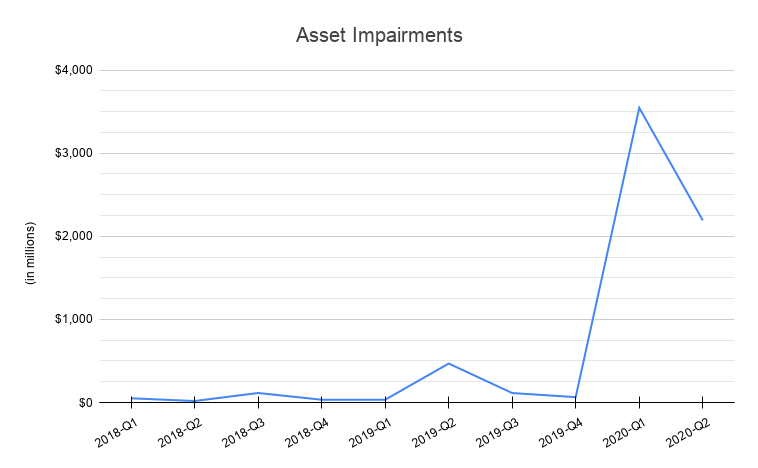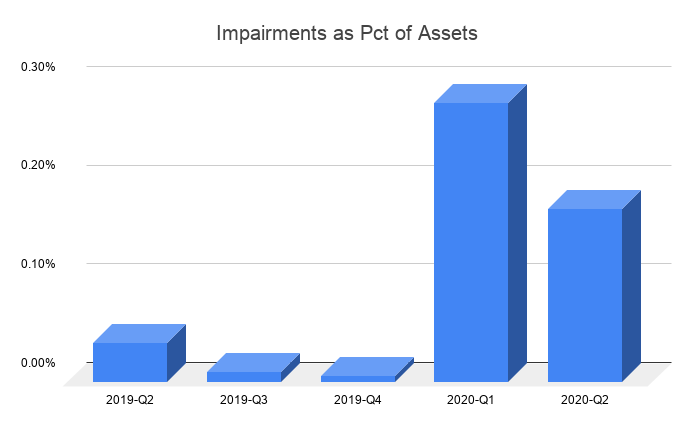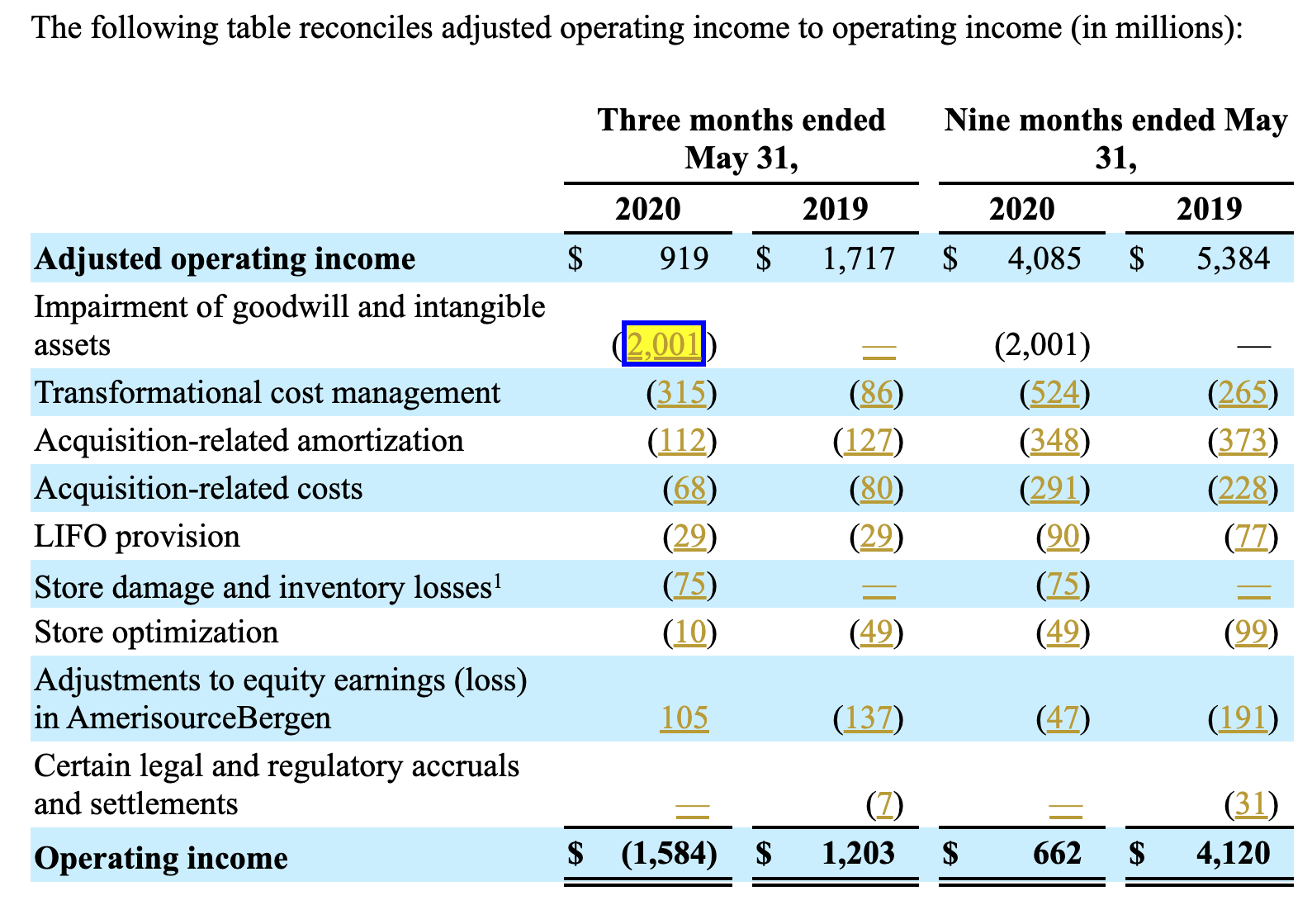We continue our look at the retail sector today with a dive into one of the most painful facts of life in corporate reporting: impairments.
Nobody likes them; they can ruin net income for the quarter, and in extreme cases can leave the balance sheet reeling. But with coronavirus lockdowns and recession ravaging the retail sector, impairments were inevitable.
How inevitable, exactly? We took a look.
Among the 40+ large retailers we’ve been examining for Retail Week, impairments totaled $2.19 billion for second-quarter 2020.
The good news is that $2.19 billion is actually lower than the $3.54 billion those same firms reported in the first quarter of this year. The bad news… well, take a look at Figure 1, below. That’s what these firms have been reporting for impairments since the start of 2018.

Like, wow. No other quarter in the last two years comes remotely close to what our retail sample reported in the first two quarters of this year. That bump in the middle of 2019? The amount was $469.8 million for all 46 firms we examined, in the second quarter of 2019. Macy’s ($M) and Walgreens Boots Alliance ($WBA) both have declared asset impairments larger than that amount individually this year.
OK, so impairments soared earlier this year. Next question: how much have those impairments hammered the retailers’ balance sheets?
Not that much, thankfully. Total assets for this sample group grew rather nicely over the last 10 quarters, from $1.06 trillion at the start of 2018 to $1.253 trillion in Q2 2020. So even though impairments spiked this year, they still didn’t nick assets to any material degree.
On the other hand, as you can see in Figure 2, below, impairments as a percentage of assets still — soared? Spiked? Shot up? We’re running out of verbs to describe it.

For context, we didn’t even include prior quarters because the percentage was essentially zero.
Impairments Up Close
Individual impairment charges happened in numbers great and small.
For example, Macy’s took a $3.15 billion charge in Q1. Almost all of that ($3.07 billion) was an impairment of goodwill, stemming from the unprecedented disruption of coronavirus. As the company said in its disclosure:
The Company determined the fair value of each of its reporting units using a market approach, an income approach, or a combination of both, where appropriate. Relative to the prior assessment, as part of this current assessment, it was determined that an increase in the discount rate applied in the valuation was required to align with market-based assumptions and company-specific risk. This higher discount rate, in conjunction with revised long-term projections, resulted in lower fair values of the reporting units.
More interesting is the disclosure from Walgreens-Boots Alliance. Yes, the firm did record a $2 billion impairment in Q2, as seen in this table reconciling adjusted net income of $919 million to an actual, GAAP-approved net loss of $1.58 billion.

Except, Walgreens doesn’t give a clear sense of where that number came from. In the Goodwill section of disclosures, it identifies a $1.67 billion impairment in the goodwill of its retail pharmacy brand — but that’s all it says. Nothing further to explain how you get from that $1.67 to the $2 billion actually recorded.
Only when you crack open Management Discussion & Analysis and search “impairment” do you find this meager statement:
In addition, due to the significant impact of COVID-19 on the financial performance of the Retail Pharmacy International division, the company completed a quantitative impairment analysis for goodwill and certain intangibles in Boots UK, which resulted in the recording of non-cash pre-tax impairment charges of $2.0 billion.
Uh, thanks, guys. Glad to see you’re so sparing with electrons to type out that data.
So we look forward to what Q3 will bring the retail sector, and what other trends might emerge as we analyze the many more retail firms that submit Q2 filings over the weeks to come.